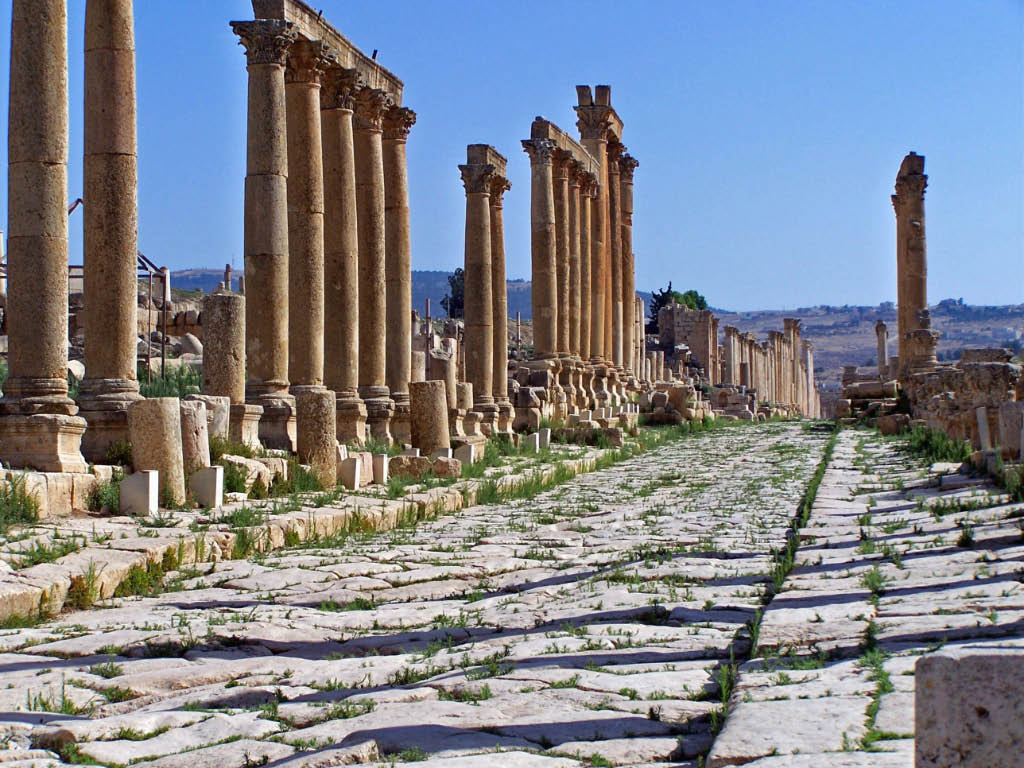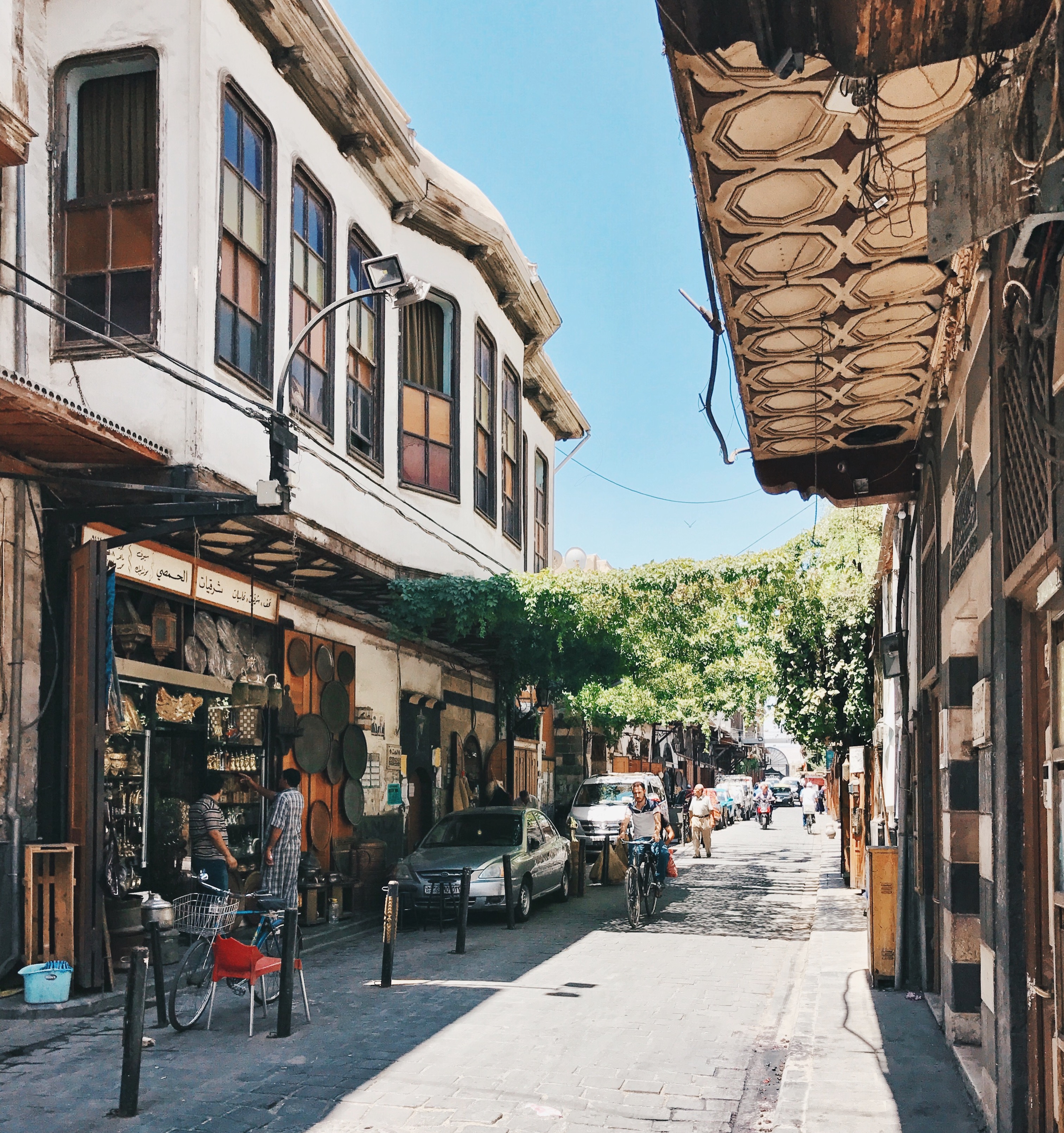|
Centuriation
Centuriation (in Latin ''centuriatio'' or, more usually, ''limitatio''), also known as Roman grid, was a method of land measurement used by the Romans. In many cases land divisions based on the survey formed a field system, often referred to in modern times by the same name. According to O. A. W. Dilke, centuriation combined and developed features of land surveying present in Egypt, Etruria, Greek towns and Greek countryside. Centuriation is characterised by the regular layout of a square grid traced using surveyors' instruments. It may appear in the form of roads, canals and agricultural plots. In some cases these plots, when formed, were allocated to Roman army veterans in a new colony, but they might also be returned to the indigenous inhabitants, as at Orange (France). The study of centuriation is very important for reconstructing landscape history in many former areas of the Roman empire. History The Romans began to use centuriation for the foundation, in the fourth century ... [...More Info...] [...Related Items...] OR: [Wikipedia] [Google] [Baidu] |
Ancient Rome
In modern historiography, ancient Rome refers to Roman civilisation from the founding of the city of Rome in the 8th century BC to the collapse of the Western Roman Empire in the 5th century AD. It encompasses the Roman Kingdom (753–509 BC), Roman Republic (509–27 BC) and Roman Empire (27 BC–476 AD) until the fall of the western empire. Ancient Rome began as an Italic settlement, traditionally dated to 753 BC, beside the River Tiber in the Italian Peninsula. The settlement grew into the city and polity of Rome, and came to control its neighbours through a combination of treaties and military strength. It eventually dominated the Italian Peninsula, assimilated the Greek culture of southern Italy ( Magna Grecia) and the Etruscan culture and acquired an Empire that took in much of Europe and the lands and peoples surrounding the Mediterranean Sea. It was among the largest empires in the ancient world, with an estimated 50 to 90 million inhabitants, roughly 20% of t ... [...More Info...] [...Related Items...] OR: [Wikipedia] [Google] [Baidu] |
Eclogues
The ''Eclogues'' (; ), also called the ''Bucolics'', is the first of the three major works of the Latin poet Virgil. Background Taking as his generic model the Greek bucolic poetry of Theocritus, Virgil created a Roman version partly by offering a dramatic and mythic interpretation of revolutionary change at Rome in the turbulent period between roughly 44 and 38 BC. Virgil introduced political clamor largely absent from Theocritus' poems, called idylls ("little scenes" or "vignettes"), even though erotic turbulence disturbs the "idyllic" landscapes of Theocritus. Virgil's book contains ten pieces, each called not an idyll but an eclogue ("draft" or "selection" or "reckoning"), populated by and large with herdsmen imagined conversing and performing amoebaean singing in largely rural settings, whether suffering or embracing revolutionary change or happy or unhappy love. Performed with great success on the Roman stage, they feature a mix of visionary politics and eroticism that ... [...More Info...] [...Related Items...] OR: [Wikipedia] [Google] [Baidu] |
Survey Township
A survey township, sometimes called a Congressional township or just township, as used by the United States Public Land Survey System, is a nominally-square area of land that is nominally six U.S. survey miles (about 9.66 km) on a side. Each 36-square-mile (about 93.2 km2) township is divided into 36 sections of one square mile (640 acres, roughly 2.6 km2) each. The sections can be further subdivided for sale. The townships are referenced by a numbering system that locates the township in relation to a principal meridian (north-south) and a base line (east-west). For example, Township 2 North, Range 4 East is the 4th township east of the principal meridian and the 2nd township north of the base line. Township (exterior) lines were originally surveyed and platted by the US General Land Office using contracted private survey crews. Later survey crews subdivided the townships into section (interior) lines. Virtually all lands covered by this system were sold accord ... [...More Info...] [...Related Items...] OR: [Wikipedia] [Google] [Baidu] |
Thomas Jefferson
Thomas Jefferson (April 13, 1743 – July 4, 1826) was an American statesman, diplomat, lawyer, architect, philosopher, and Founding Fathers of the United States, Founding Father who served as the third president of the United States from 1801 to 1809. He was previously the nation's second vice president of the United States, vice president under John Adams and the first United States Secretary of State, United States secretary of state under George Washington. The principal author of the United States Declaration of Independence, Declaration of Independence, Jefferson was a proponent of democracy, republicanism, and individual rights, motivating Thirteen Colonies, American colonists to break from the Kingdom of Great Britain and form a new nation. He produced formative documents and decisions at state, national, and international levels. During the American Revolution, Jefferson represented Virginia in the Continental Congress that adopted the Declaration of Independence. As ... [...More Info...] [...Related Items...] OR: [Wikipedia] [Google] [Baidu] |
Dioptra
A dioptra (sometimes also named dioptre or diopter, from el, διόπτρα) is a classical astronomical and surveying instrument, dating from the 3rd century BC. The dioptra was a sighting tube or, alternatively, a rod with a sight at both ends, attached to a stand. If fitted with protractors, it could be used to measure angles. Use Greek astronomers used the dioptra to measure the positions of stars; both Euclid and Geminus refer to the dioptra in their astronomical works. It continued in use as an effective surveying tool. Adapted to surveying, the dioptra is similar to the theodolite, or surveyor's transit, which dates to the sixteenth century. It is a more accurate version of the groma. There is some speculation that it may have been used to build the Eupalinian aqueduct. Called "one of the greatest engineering achievements of ancient times," it is a tunnel 1,036 meters (4,000 ft) long, "excavated through Mount Kastro on the Greek island of Samos, ... [...More Info...] [...Related Items...] OR: [Wikipedia] [Google] [Baidu] |
Chorobates
The chorobates, described by Vitruvius in Book VIII of the '' De architectura'', was used to measure horizontal planes and was especially important in the construction of aqueducts. Similar to modern spirit levels, the chorobates consisted of a beam of wood 6 m in length held by two supporting legs and equipped with two plumb lines at each end. The legs were joined to the beam by two diagonal rods with carved notches. If the notches corresponding to the plumb lines matched on both sides, it showed that the beam was level. On top of the beam, a groove or channel was carved. If the condition was too windy for the plumb bobs to work effectively, the surveyor could pour water into the groove and measure the plane by checking the water level. See also * Groma *Dioptra *Chorography Chorography (from wikt:χῶρος, χῶρος ''khōros'', "place" and wikt:γράφω, γράφειν ''graphein'', "to write") is the art of describing or mapping a region or district, and by exte ... [...More Info...] [...Related Items...] OR: [Wikipedia] [Google] [Baidu] |
Cardo Maximus
A cardo (plural ''cardines'') was a north–south street in Ancient Roman cities and military castra, camps as an integral component of city planning. The cardo maximus, or most often the ''cardo'', was the main or central north–south-oriented street. Etymology The ''cardo maximus'' was the "hinge" or axis of the city, derived from Greek καρδίᾱ, kardia ("heart") and as such was generally lined with shops and vendors, and served as a hub of economic life. Most Roman cities also had a Decumanus Maximus, an east–west street that served as a secondary main street. Due to varying geography, in some cities the Decumanus is the main street and the Cardo is secondary, but in general the Cardo maximus served as the primary street. The Forum (Roman), Forum was normally located at, or close to, the intersection of the Decumanus and the Cardo. Examples Apamea, Syria The Cardo Maximus of Apamea (Syria), Apamea, Syria ran through the centre of the city directly from North to S ... [...More Info...] [...Related Items...] OR: [Wikipedia] [Google] [Baidu] |
Decumanus Maximus
In Roman urban planning, a decumanus was an east–west-oriented road in a Roman city or castrum (military camp). The main decumanus of a particular city was the Decumanus Maximus, or most often simply "the Decumanus". In the rectangular street grid of the typical Roman city plan, the decumanus was crossed by the perpendicular cardo, a north–south street. In a military camp, the decumanus connected the Porta Praetoria (closest to the enemy) to the Porta Decumana (away from the enemy). In the center – called '' groma'' – of a city or castrum, the Decumanus Maximus crossed the perpendicular ''Cardo Maximus'', the primary north–south road. The Forum was normally located close to this intersection of the Decumanus Maximus and the Cardo Maximus. Etymology ''Decumanus'' or ''decimanus'' was the Latin word for 'tenth'. This name is said to come from the fact that the ''via decumana'' or ''decimana'' (the ''tenth'') separated the Tenth Cohort from the Ninth in the legionary enc ... [...More Info...] [...Related Items...] OR: [Wikipedia] [Google] [Baidu] |
Groma Surveying
The ''groma'' or ''gruma'' was a Roman surveying instrument. It comprised a vertical staff with horizontal cross-pieces mounted at right angles on a bracket. Each cross piece had a plumb line hanging vertically at each end. It was used to survey straight lines and right angles, thence squares or rectangles. They were stabilized on the high ground, and pointed in the direction it was going to be used. The helper would step back 100 steps and place a pole. The surveyor would tell him where to move the pole and the helper would set it down. The same name was given to: * the center of any new military camp, i.e. the point from which was traced the regular grid by using the ''groma'' instrument * the center of a new town, from which the gromatici (surveyors) began to lay out cardo and decumanus grid, with a plough and a pair of oxen The groma surveying instrument may have originated in Mesopotamia or Greece before the 4th century BC. Subsequently, it was brought to Rome by the Etrusc ... [...More Info...] [...Related Items...] OR: [Wikipedia] [Google] [Baidu] |
Salerno
Salerno (, , ; nap, label= Salernitano, Saliernë, ) is an ancient city and ''comune'' in Campania (southwestern Italy) and is the capital of the namesake province, being the second largest city in the region by number of inhabitants, after Naples. It is located on the Gulf of Salerno on the Tyrrhenian Sea. In recent history the city hosted Victor Emmanuel III, the King of Italy, who moved from Rome in 1943 after Italy negotiated a peace with the Allies in World War II, making Salerno the capital of the "Government of the South" (''Regno del Sud'') and therefore provisional government seat for six months. Some of the Allied landings during Operation Avalanche (the invasion of Italy) occurred near Salerno. Human settlement at Salerno has a rich and vibrant past, dating back to pre-historic times. In the early Middle Ages it was an independent Lombard principality, the Principality of Salerno, which around the 11th century comprised most of Southern Italy. During this time, th ... [...More Info...] [...Related Items...] OR: [Wikipedia] [Google] [Baidu] |







_02.jpg)